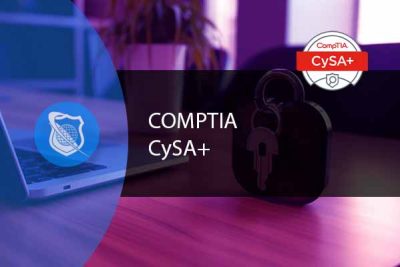
Lifetime
An ITU Online Training exclusive. The only Buy Once, Never Pay for IT training again program available. Plus, get all new and updated content for life.

With an All-Access Pass, you get access to every current and future ITU course. Access over 2,500 hours of on-demand IT Training 24/7. With over 13,000 on-demand training videos and 19,000+ practice questions, you'll have the tools to excel in the critical IT skills needed to elevate your IT Career. Our All-Access pass is available in three affordable plans.
Paris is the capital of France.
Tokyo is the capital of Japan.
Most Popular
Categories


With an All-Access Pass, you get access to every current and future ITU course. Access over 2,500 hours of on-demand IT Training 24/7. With over 13,000 on-demand training videos and 19,000+ practice questions, you'll have the tools to excel in the critical IT skills needed to elevate your IT Career. Our All-Access pass is available in three affordable plans.

ITU provides a vast array of IT-focused on-demand training designed to help you excel in both entry-level and advanced IT skills. Browse our most popular training or take a deper dive into our robust catalog of training categories.
Popular Courses All Categories
 CompTIA
Train for a globally recognized IT certification with our comprehensive CompTIA courses.
A+ | Network+ | Security+
CompTIA
Train for a globally recognized IT certification with our comprehensive CompTIA courses.
A+ | Network+ | Security+
 Cybersecurity
Master the art of combating cybersecurity threats and become a cyber hero.
Ethical Hacking (CEH) | CISSP | CISM
Cybersecurity
Master the art of combating cybersecurity threats and become a cyber hero.
Ethical Hacking (CEH) | CISSP | CISM
 Cloud Computing
An essential skill set in today's IT environments. Learn cloud computing platforms
Azure Administrator | Google Cloud | AWS Practitioner
Cloud Computing
An essential skill set in today's IT environments. Learn cloud computing platforms
Azure Administrator | Google Cloud | AWS Practitioner
 Project Management
Key to successful projects, learn the skills and methodolgy behind project management.
PMP | Risk Mgmt | Agile PM
Adobe
Business & Management
Cisco
Cloud Computing
CompTIA
Computer Support
Cybersecurity
Data Administration
Data Analysis
Development & Programming
Marketing & Social Media
Medical Coding & Billing
Microsoft
Microsoft Office
Network Administration
Networking & Software
Project Management
Web Development
Project Management
Key to successful projects, learn the skills and methodolgy behind project management.
PMP | Risk Mgmt | Agile PM
Adobe
Business & Management
Cisco
Cloud Computing
CompTIA
Computer Support
Cybersecurity
Data Administration
Data Analysis
Development & Programming
Marketing & Social Media
Medical Coding & Billing
Microsoft
Microsoft Office
Network Administration
Networking & Software
Project Management
Web Development

In this IT course you will learn how to configure and use threat-detection tools, perform a threat intelligence analysis, and interpret the results with the end goal of securing an organizations applications and systems with your security solutions. This IT course covers the exam objectives for the CompTIA Cybersecurity Analyst , or CySA+ exam.
Included In This Course
Closed Captions
Certificate of Completion
Course Description
Cybersecurity certification is one of the hottest IT-related certifications today due to all the cybersecurity threats we face each day from bad actors. The CompTIA Cybersecurity Analyst, also known as CompTIA CySA+, is a CompTIA certification. CySA+ is focused on cyber security fundamentals and arming you with knowledge and skills required to perform the following:
Securing an organization’s network environments applications and systems is the primary goal of a Cybersecurity Analyst. hHaving the practical knowledge to identify and deploy effective IT environments that protect agents network attack strategies will set you apart from your peers in your IT career.
The CompTIA CySA+ is a vendor-neutral certification. A student normally has three to four years of experience in a related IT field as well as a Security+ or equivalent knowledge. In this regard, the CompTIA CySA+ lies between the CompTIA Security+ and CompTIA Advanced Security Practitioner (CASP) exams. It is an excellent go-between to tackle before diving into the CASP, but when the CompTIA Security+ isn’t enough.
Cybersecurity certification is an ongoing requirement for government agencies. The CompTIA CySA+ was developed with a focus on meeting government requirements to certify IT, workers or contractors. With a Cybersecurity certification, you display an understanding of security best practices and protocols beyond that which is provided by the Security+ certification. You will prove a level of expertise beyond that of basic security practices that are followed when using a computer.
This allows any IT employee to prove a better understanding of enterprise security practices, and the necessary tools needed for organizational risk mitigation. The modules of this IT course align with the official objectives of the certification. The course expands past the scope of the certification. It also provides real-life examples and lead-ins to direct further study. This will give students an easier understanding of the material for the certification as well as a basic understanding to apply to real-life applications.
We encourage you to visit the CompTIA website for full details on theCySA+ certification and exam code CS0-001.
Understanding key terms is vital for anyone pursuing the CompTIA Cybersecurity Analyst (CySA+) certification or working in the cybersecurity field. These terms are fundamental to grasping the concepts and practices in cybersecurity.
| Term | Definition |
|---|---|
| CompTIA CySA+ | A certification focusing on cybersecurity skills, including threat detection, data analysis, and incident response. |
| Threat Detection | Identifying potential threats in a cybersecurity context. |
| Data Analysis | The process of examining, cleansing, transforming, and modeling data to discover useful information in cybersecurity. |
| Vulnerability Management | Identifying, classifying, prioritizing, remediating, and mitigating software vulnerabilities. |
| Incident Response | A method of handling and investigating a cybersecurity incident or breach. |
| Cybersecurity | The practice of protecting systems, networks, and programs from digital attacks. |
| Network Reconnaissance | The collection of information about a network to identify potential vulnerabilities or attack vectors. |
| Security Architecture | The design and structure of systems that monitor and control security aspects of an organization. |
| Risk Mitigation | Strategies and techniques used to manage and minimize cybersecurity risks. |
| Forensics | Techniques used to collect, preserve, and analyze data in the context of cybersecurity incidents. |
| Identity and Access Management (IAM) | Processes and technologies to manage and monitor user access to critical information. |
| Compliance | Adhering to laws, regulations, guidelines, and specifications relevant to cybersecurity. |
| Encryption | The process of converting data into a code to prevent unauthorized access. |
| Threat Intelligence | Knowledge used to understand and predict cybercriminal capabilities and goals. |
| Penetration Testing | Simulated cyber attacks on computer systems to evaluate security. |
| Malware | Malicious software designed to disrupt, damage, or gain unauthorized access to computer systems. |
| Security Policy | A set of rules and practices that specify how an organization manages and protects its information assets. |
| Vulnerability Scan | A software tool that assesses the security weaknesses in networks, systems, or applications. |
| Incident Management | The process of identifying, analyzing, and correcting hazards to prevent a future re-occurrence of an incident. |
| Cybersecurity Framework | A set of guidelines and best practices to manage cybersecurity risks. |
These terms are essential for anyone studying for the CompTIA CySA+ certification or working in the field of cybersecurity. They form the basis for a strong understanding of the complex cybersecurity landscape.
The CompTIA CySA+ course offered by ITU Online is focused on cybersecurity fundamentals. It provides you with the knowledge and skills to configure and use threat-detection tools, perform data analysis, deploy threat detection techniques, and interpret the results. The course also trains you in presenting a vulnerability analysis and managing vulnerability to mitigate cyber threats. The ultimate goal is to secure an organization’s network environments, applications, and systems.
The course consists of 17 training hours, 67 videos, and 4 topics. Additionally, there are 250 practice questions included in the course to help you assess your understanding and readiness.
The CompTIA CySA+ is a vendor-neutral certification. Typically, a student taking this course should have three to four years of experience in a related IT field, as well as a Security+ certification or equivalent knowledge.
The CompTIA CySA+ course is available on-demand. You can get access to this training and over 2,500 hours of other content with ITU Online’s All Access Monthly Subscription. There’s a 7-day free trial period during which you can access the course with no obligation, and you can cancel anytime.
Yes, you can take this course from anywhere in the world as long as you have an internet connection. The course is online and on-demand, meaning you can access it at any time that’s convenient for you.
Yes, ITU Online offers a wide range of courses that could complement your cybersecurity education, including courses in other CompTIA certifications, network administration, data administration, development and programming, and more. We also offer various IT training bundles on sale

Course Outline
Start this course for free with our 10-day trial of the all-access subscription providing access to over 2,600 hours of training.
$49.00

Monthly All-Access Subscription
7 Days Free - $39.00 / month
A great option at an affordable monthly price.
Annual All-Access Subscription
$229 / year
A discounted price when paying for your All Access library on an annual basis.
Lifetime All-Access Library
$379 One time payment
Exceptional Value. Pay once, never have to buy IT training again.
$49.00
In this course you will learn to manage the cost, deploy, adhere to compliance, and secure a Cloud-based network. This course is ideal for IT personnel who focus on infrastructure, those who are interested in becoming Cloud practitioners, IT project managers who manage migrations, and IT managers who need a further understanding of Cloud technologies.
$59.00
The CompTIA CSIS is a progressive certification in the IT field that was crafted by CompTIA. It is ideal for those with 0-2 years of experience who are looking to upskill. At ITU, we offer an extensive Certification Path which comes bundled with educative materials and preparing you to pass the three exams;CompTIA A+, Comptia Network+ and Comptia Security+.
$59.00
IT professionals with 2-5 years of experience can gain the valuable CompTIA CCAP certification by following their Certification Path. This comprehensive study guide will provide you with all the essential learning materials and advice needed to ace both your CompTIA Network+ and Cloud+ exams, giving you a competitive edge in today’s ever-evolving tech industry.

Unlock endless learning opportunities with over 2,500 hours of IT training at our lowest price ever. Plus, get all new and updated online courses for free while your subscription remains active.
Cancel at your convenience. This exceptional deal on IT training provides you access to high-quality IT education at the lowest monthly subscription rate in the market. Boost your IT skills and join our journey towards a smarter tomorrow.